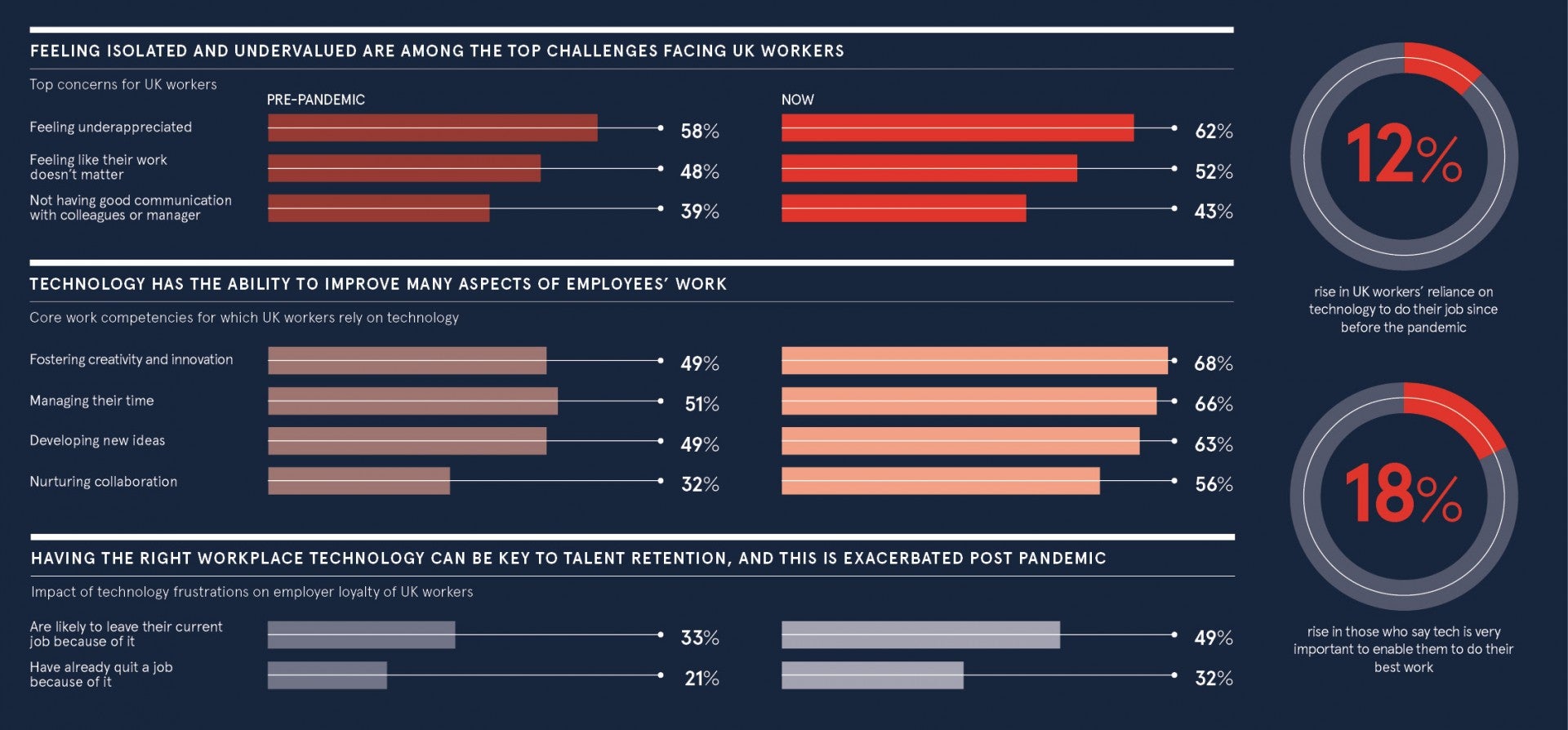
Although the trend of ‘nomadic work’, where employees can work from anywhere, had been slowly rising for the best part of a decade, the Covid-19 pandemic drastically accelerated its traction. Out of sheer necessity and survival, companies had to immediately find ways to enable their employees to work as productively as possible from home every day.
With vaccines providing a welcome exit route from the Covid-19 crisis, organisations are now considering what work model they will adopt post-pandemic. Rather than returning to their old ways of working, most are planning a hybrid model that empowers employees to find the balance that works for them. That could be visiting the office for collaboration and brainstorming, while working a few days a week from home. Some will use the office much more, some less.
The key to executing the hybrid model effectively is to provide the right technology tools to help people be successful wherever they choose to be. While companies may see this as something mostly needed to appease the expectations of millennial workers, that is no longer the case, according to research by Adobe Workfront and The Center for Generational Kinetics. Running the same survey before the pandemic, in February 2020, and again eight months later, revealed a stark levelling of any generational digital divide.
When asked before the pandemic if they would consider leaving their job due to a lack of new technology, 24% of Gen X and 37% of Millennials said they would. Yet eight months into the great global working from home experiment and the research showed this had leapt to 48% of Gen X and 50% of Millennials – hardly any difference between the two cohorts and a very concerning stat for business leaders fighting to retain their best talent.

“In trends research, we generally see change happen incrementally unless there is a significant external event,” says Jason Dorsey, president and co-founder of The Center for Generational Kinetics. “With just eight months between the two studies, a change of three to five percentage points is statistically significant and worth noting. The fact that in some of the answers we see changes of five points, 10 points, even more, is remarkable and reflects the unusual speed at which the pandemic is changing work, cultural and personal norms.”
There’s no hiding from the vitally important role of technology in a hybrid workforce. A poor digital strategy will quickly lead to an inadequate employee experience, as already demonstrated during the pandemic. Despite the best intentions of organisations to adapt to remote working, the panic-induced software purchasing spree triggered in March last year has left many with standalone tools and applications that do not connect with their other systems or data.
Recognising the need for good technology in order to be successful, employees are willing to take action if their workplace technology is lacking. A shocking percentage of the UK workforce - almost half - would go as far as leaving their job due to frustrations with technology, Adobe Workfront’s State of Work research found. The number of UK digital workers who see technology as ‘very important’ to managing their role increased by 24 points from February to October 2020, while those who attribute it to their ability to do their best work rose by 18 points.
“Digital workers know how technology should work, and they know that it’s critical to their ability to be successful,” says Elizabeth Volini, executive director, ePMO lead and PPM platform owner at commercial real estate company JLL and contributor to the State of Work report. “When their employers provide them with subpar tools, it’s more than an inconvenience. It demonstrates that the company isn’t very concerned with either the quality of work or the people doing the work.”
Creating a personalised digital work experience must also become a business imperative, ensuring all individuals are enabled with the right tools
The ability to attract and retain top talent rests on the quality of technology in an organisation.
Businesses need to create collaborative, digital work experiences that reflect the way that work and the people doing the work are changing. The right technologies and culture are the engine for the digital work experience, connecting distributed teams and empowering them to do their best work, from anywhere, using their favourite tools.
And it is not a one-size-fits-all solution; creating a personalised digital work experience must also become a business imperative, ensuring all individuals are enabled with the right tools to keep them engaged and connected.
“While we’re beginning to emerge from the pandemic, we can expect to be in a state of perpetual change for the foreseeable future,” says Paige Erickson, managing director international at Adobe Workfront, the leader in enterprise work management.
“Adapting to this requires business leaders to build a digitally resilient workplace where work between departments and across the business is optimised so teams can work remotely and at speed. This requires a central solution that gives workers full visibility across the organisation’s strategy. Only then can they make informed data-driven decisions to reach that strategy.”
In the hybrid model, businesses need to reject silos and commit to integrated technologies that connect people, process and data. A work management application like Adobe Workfront serves as the connective tissue between the countless tools across an enterprise, linking and presenting data and insights from various different systems to the right people at the right time, allowing businesses to quickly adapt to new ways of working when needed.
Adobe Workfront brings enterprises a ‘system of record’ that connects and automates the essential data, processes, applications and resources required to effectively run and scale the business. Its capabilities and integration tools deliver a single source of truth that centralises work, ensuring dispersed and cross-functional teams can execute the right work from anywhere.
“All employees, regardless of age, are bringing higher expectations to work because of their personal digital experiences,” Erickson adds. “The younger, digital-native workforce cohorts will inevitably be the early adopters of all new technology innovations, but our research shows other digital immigrants soon follow.
“The pandemic has proved it’s not where we work but how we work, and the outcome of that work, that’s critical. Present and future work requires companies to meet employees where they are, with the right processes and technologies to support them in becoming and staying engaged with each other and on work aligned to strategic objectives, in order to stay competitive and thrive in this new digital economy.”
For more information, visit workfront.com
Promoted by Adobe Workfront

